Experience the perfect blend of simplicity and flavor with this easy-to-bake Orange Pound Cake, where classic comfort meets the vibrant zest of fresh oranges.
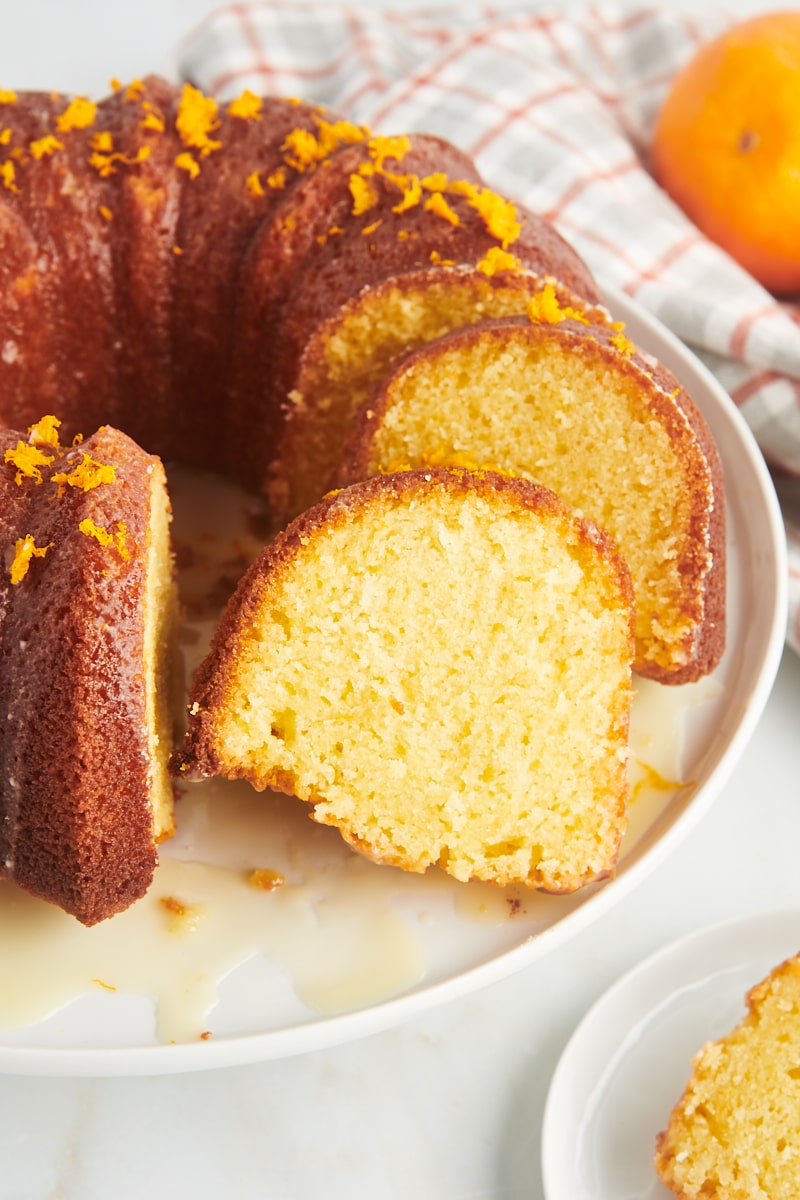
This Orange Pound Cake combines the simplicity of a classic pound cake with the zesty, invigorating twist of fresh oranges. Whether you’re looking to brighten up a gloomy day, add a citrusy zing to your dessert menu, or just in the mood for something sweet and satisfying, this cake has got you covered. It’s a breeze to make, a joy to eat, and a sure crowd-pleaser.
Why You’ll Love This Orange Pound Cake Recipe
- Bright, refreshing flavor. The fresh zest and juice of oranges infuse this cake with a vibrant, citrusy taste that’s both refreshing and comforting.
- Versatile. Whether you’re hosting a brunch, needing a dessert for a family dinner, or just craving something sweet, this orange pound cake fits the bill perfectly.
- Perfect for make-ahead. This cake tastes even better the next day as the flavors have more time to meld, making it a great make-ahead option.
- Delightfully moist and dense. True to a pound cake’s nature, this cake has a satisfyingly dense texture that’s still moist and tender, thanks to the addition of orange juice and sour cream.

What You’ll Need
See the recipe card below for ingredient quantities and full instructions. Here are some notes about the ingredients needed to make your orange pound cake.
- All-purpose flour – For best results, measure by weight. Otherwise, you can use the spoon and sweep method to approximate that accuracy. Learn more: How to Measure Flour
- Baking powder – Pound cakes don’t usually have chemical leavening agents, but here they help to ensure that the cake rises sufficiently with the additional liquid in this recipe.
- Baking soda
- Salt
- Unsalted butter – Let the butter soften so it will mix well. Learn more: How to Soften Butter
- Granulated sugar
- Eggs – Let these come to room temperature for easier mixing and a smoother batter. I recommend baking with large eggs.
- Oranges – You’ll need both orange juice and orange zest for this cake. A medium-sized orange will usually yield about 1/4 cup of juice.
- Sour cream – Set this out along with your eggs. Use full-fat sour cream for best results.
- Vanilla extract

How to Make Orange Pound Cake

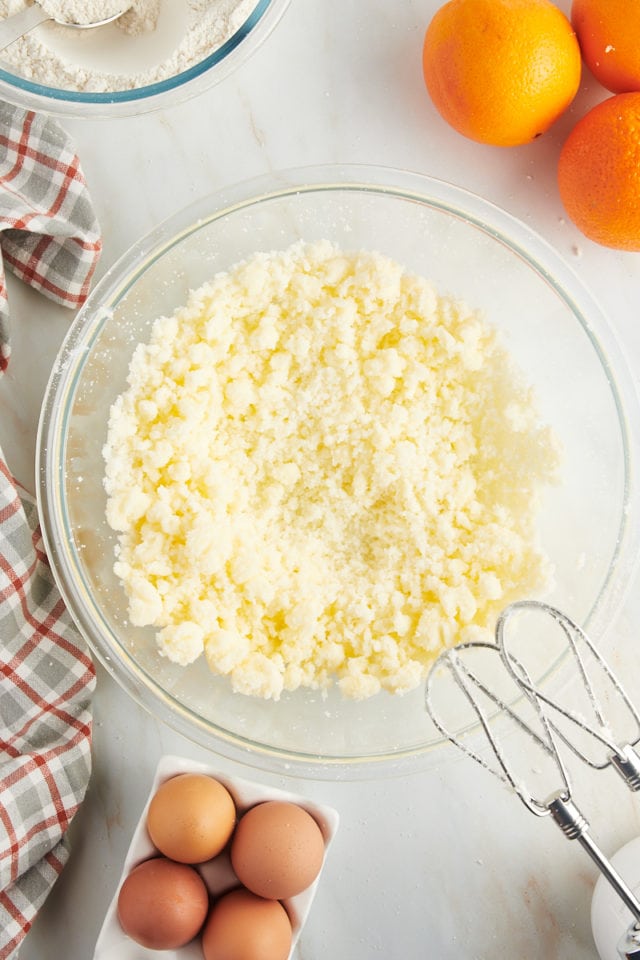

- Prepare for baking. Heat the oven to 350°F. Grease and flour a 10-inch Bundt pan or two 9″ x 5″ loaf pans. I recommend a cooking spray with flour, like Baker’s Joy or Pam Baking.
- Combine the dry ingredients. Whisk together the flour, baking powder, baking soda, and salt.
- Mix the butter, sugar, and eggs. Beat the butter and sugar with an electric mixer on medium speed until the mixture is fluffy and lightened in color. Mix in the eggs one at a time.
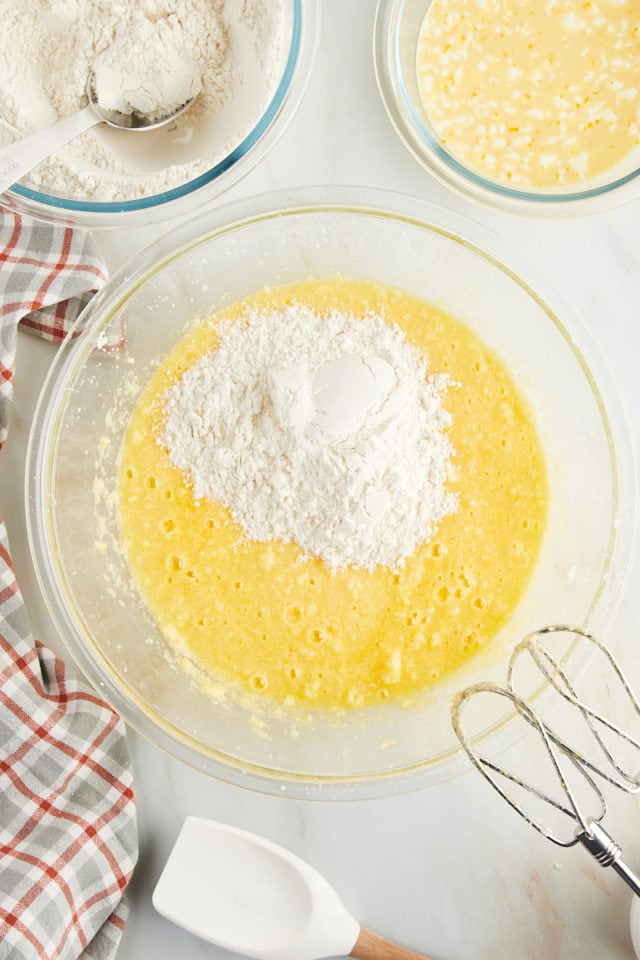
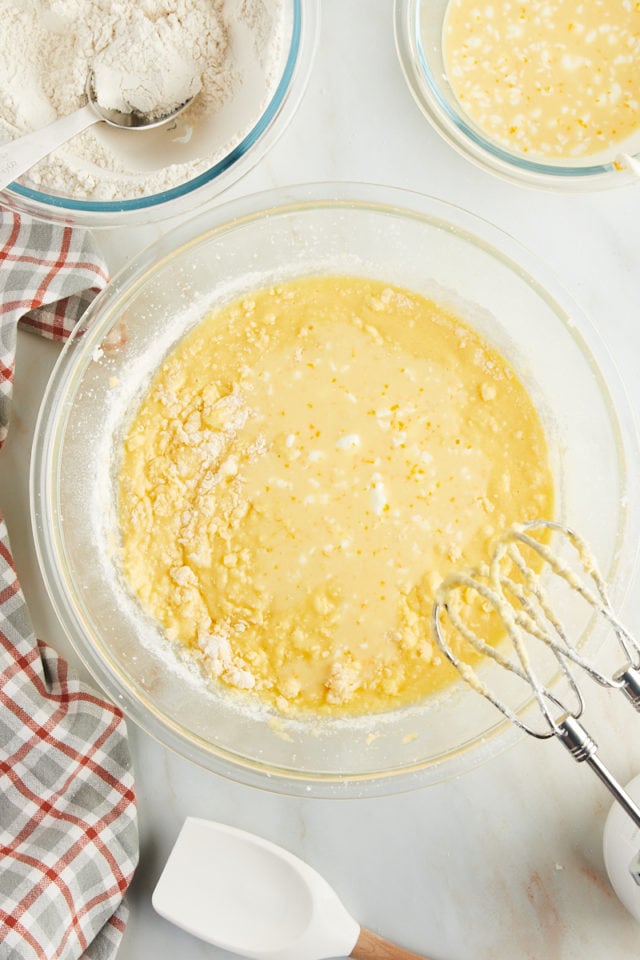

- Mix the remaining wet ingredients. Stir together the orange juice, orange zest, sour cream, and vanilla. It’s fine if this doesn’t make a smooth mixture.
- Finish mixing. With the mixer on low speed, alternate adding the flour mixture and the orange juice mixture to the creamed butter mixture. Don’t over-mix; mix just until combined.
- Bake. Transfer the batter to the prepared pan or pans, and smooth evenly. Bake for 60 to 65 minutes, or until a pick inserted into the center comes out clean.

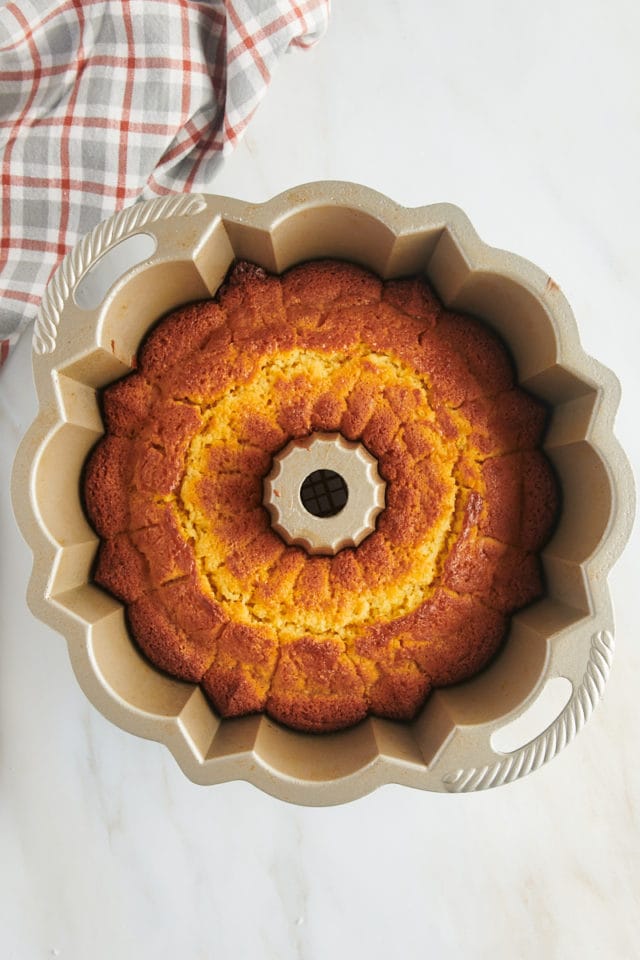

- Cool. Place the cake on a wire rack, and allow it to cool in the pan for 10 minutes. Then carefully invert it onto a rack to cool completely.
- Make the glaze. Whisk together the confectioners’ sugar and 2 tablespoons of the orange juice in a small bowl. If needed, add more orange juice until the glaze is the consistency you want.
- Glaze the cake. Slowly pour or spoon the orange glaze over the cake. If you like, sprinkle some orange zest over the top of the cake for a simple garnish.
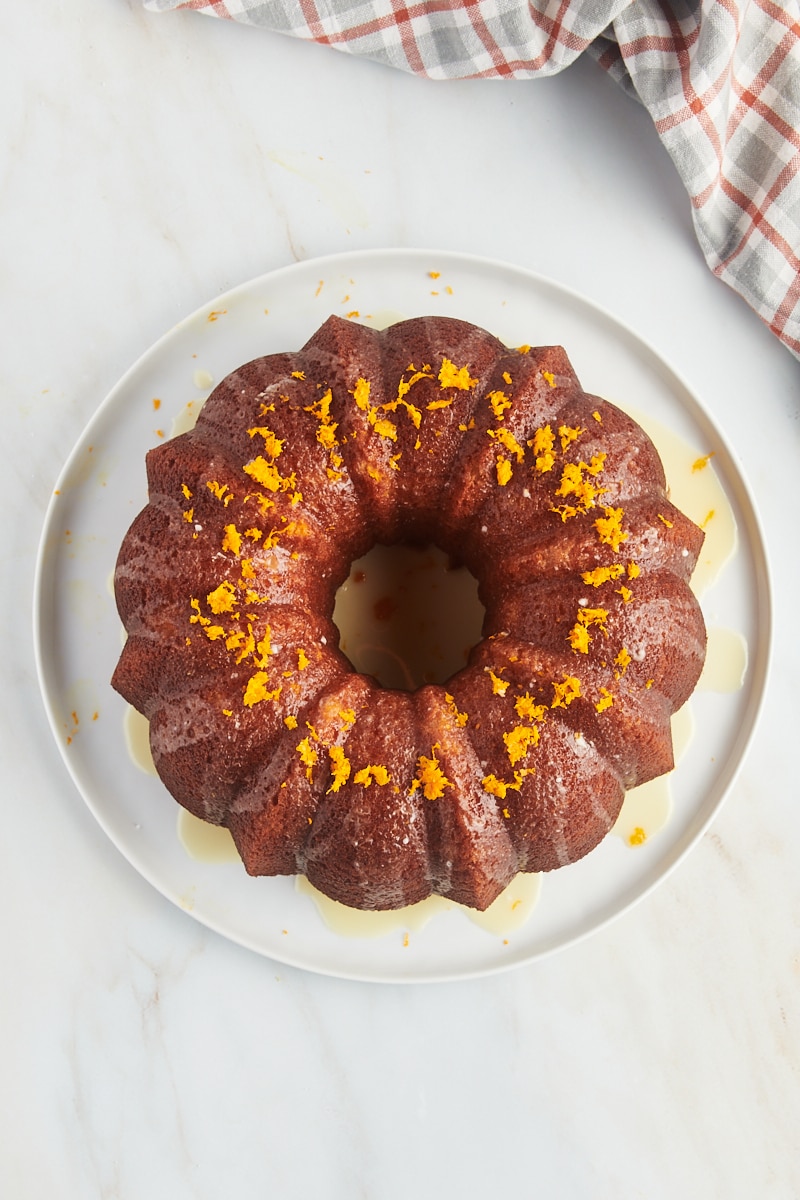
Tips for Success
For a perfect orange pound cake every time, check out these handy tips. They’ll help you navigate the baking process with ease and ensure delicious results!
- Keep it fresh. Make sure to use fresh oranges for the zest and juice. The zest is where all the aromatic oils are, so it’ll give your cake that intense orange flavor.
- Temperature matters. Ensure the eggs, butter, and sour cream aren’t straight from the refrigerator. Let them sit at room temperature before mixing for easy mixing and a smooth batter. Think room temperature for the eggs and sour cream, while the butter should be almost to room temperature so that it will cream properly.
- Give it time. The flavors in this orange pound cake will deepen and meld if left to sit for a day. If time allows, bake the cake a day ahead for stronger orange flavor.
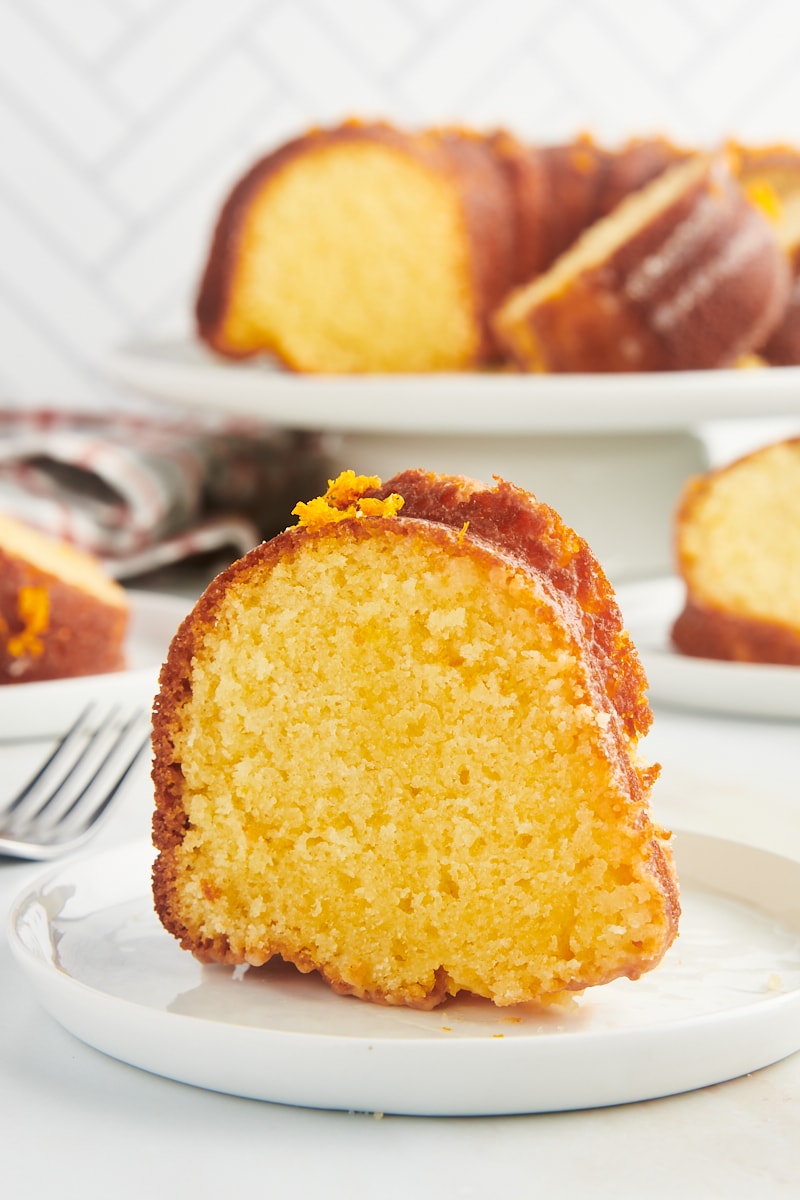
Variations
You can easily add a creative twist to this orange pound cake. Each of these delightful variations offers a unique and delicious spin that’s sure to tantalize your taste buds.
- Lemon twist. Replace half of the orange juice and zest with lemon for a citrusy blend. This adds a tangy, refreshing flavor.
- Add chocolate. Stir a handful of mini chocolate chips into the batter.
- Craving cranberries? Fold in about a cup of dried cranberries or fresh cranberries that have been lightly coated in flour. This adds a tart contrast to the sweet cake.
- Make it boozy. Dial back the orange juice in the glaze, and add a splash of orange liqueur.
- Go nuts. Use almond extract instead of vanilla, and top the finished cake with sliced almonds. The nuttiness of almonds pairs wonderfully with orange.
- Even more orange. Substitute orange extract for the vanilla extract for a bigger orange flavor.
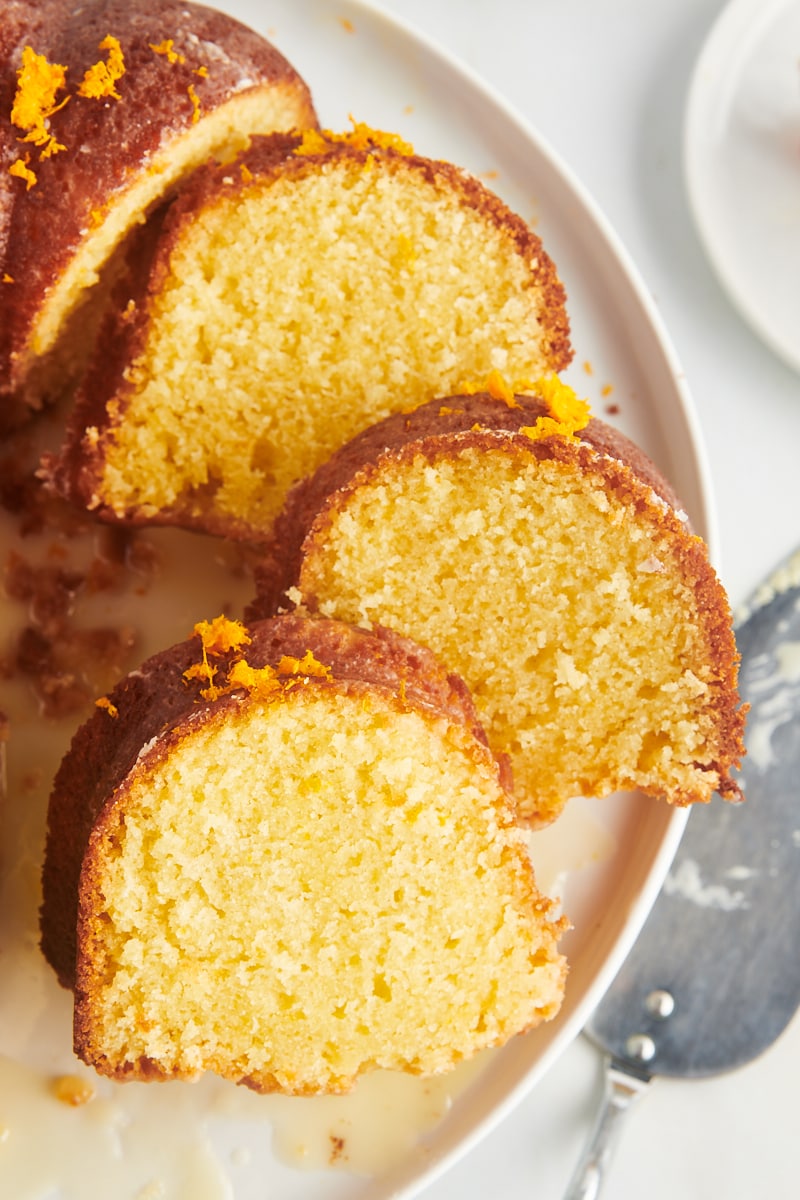
How to Store
Let the cake cool and the glaze set completely, and then store it in an airtight container for up to 3 days. For longer storage, wrap the cake in plastic wrap or aluminum foil, or place it in an airtight container, and refrigerate it. This can extend its freshness for up to a week.
Can This Orange Pound Cake Be Frozen?
Yes! First, make sure the cake has cooled completely and the glaze is set. Wrap the cake tightly in plastic wrap and then in aluminum foil, and place in a freezer bag. It can be frozen for up to 3 months. Thaw the cake overnight in the refrigerator or at room temperature before serving.
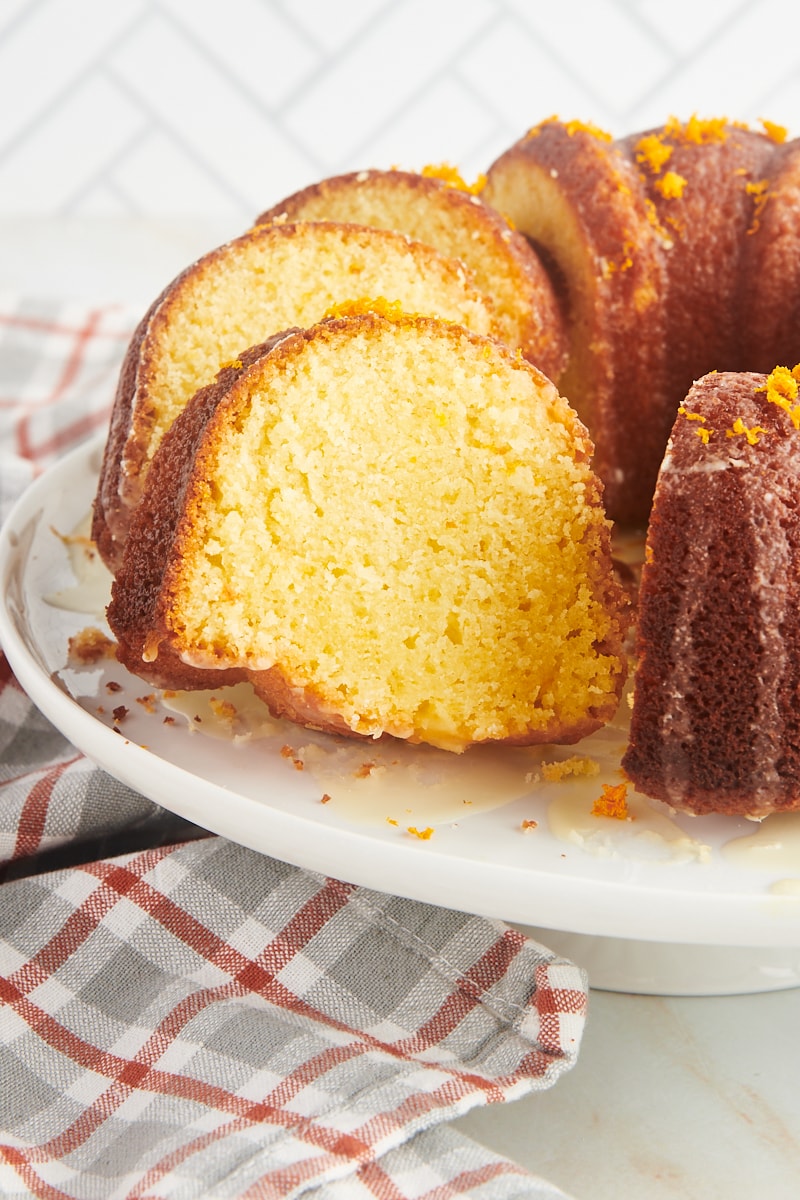
More Pound Cake Recipes
Orange Pound Cake
Bringing a slice of sunshine to your table with this Orange Pound Cake. It's the perfect balance of sweet, tangy, and utterly delicious!
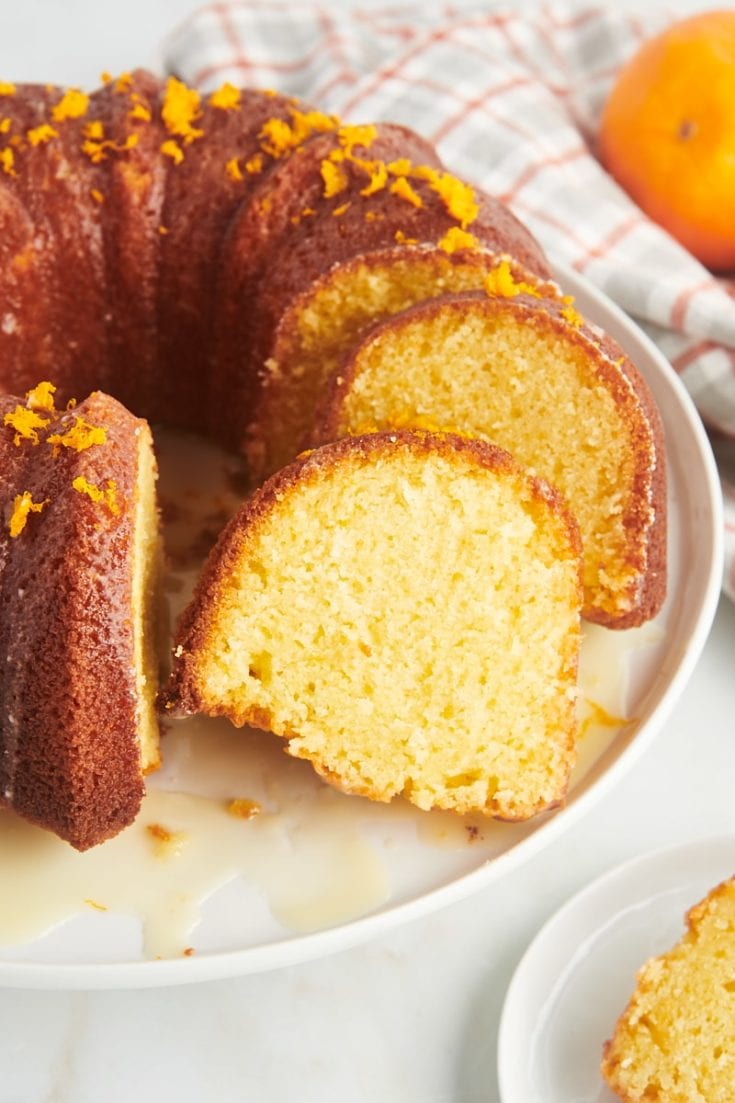
Ingredients
For the cake:
- 3 cups (360g) all-purpose flour
- 1/2 teaspoon baking powder
- 1/4 teaspoon baking soda
- 1/2 teaspoon salt
- 1 cup (226g) unsalted butter, softened
- 2 cups (400g) granulated sugar
- 4 large eggs, at room temperature
- 3/4 cup (177ml) orange juice
- 1 tablespoon orange zest (plus more for garnish)
- 1/4 cup (56g) sour cream
- 1 teaspoon vanilla extract
For the glaze:
- 1 cup (110g) confectioners' sugar, sifted
- 2-3 tablespoons (10-15ml) orange juice
Instructions
To make the cake:
- Preheat the oven to 350°F. Grease and flour a 10-inch Bundt pan or two 9” x 5” loaf pans.
- Whisk together the flour, baking powder, baking soda, and salt. Set aside.
- Using an electric mixer on medium speed, beat the butter and sugar until light and fluffy.
- Beat in the eggs one at a time, mixing well after each addition.
- In a separate bowl, combine the orange juice, orange zest, sour cream, and vanilla extract.
- Add the flour mixture to the creamed butter in three portions, alternating with two portions of the orange juice mixture. Mix just until combined.
- Pour the batter into the prepared pan and smooth the top. Bake for 60 to 65 minutes or until a pick inserted into the center comes out clean.
- Allow the cake to cool in the pan for about 10 minutes, then invert it onto a wire rack to cool completely.
To make the glaze:
- Whisk together the confectioners' sugar and 2 tablespoons of the orange juice until smooth. Add more juice, a small amount at a time, if needed to get the desired consistency.
- Drizzle the glaze over the cooled cake. Sprinkle with additional orange zest for garnish.
Recommended Products
Bake or Break is a participant in the Amazon Services LLC Associates Program, an affiliate advertising program designed to provide a means for us to earn fees by linking to Amazon.com and affiliated sites.

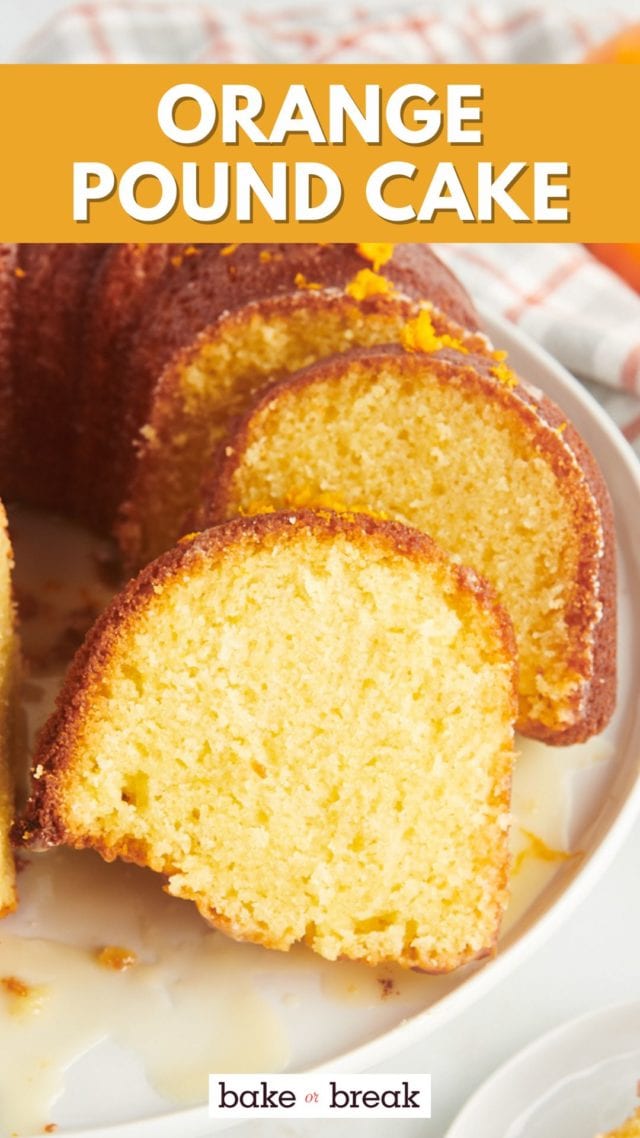


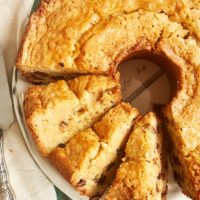
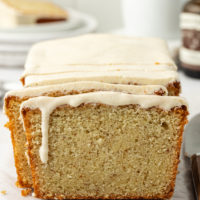

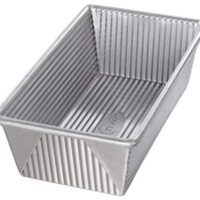






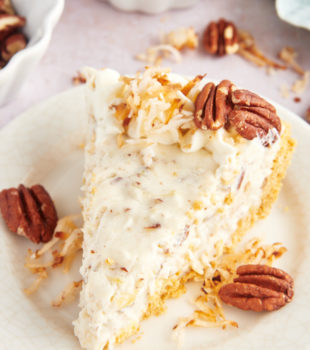




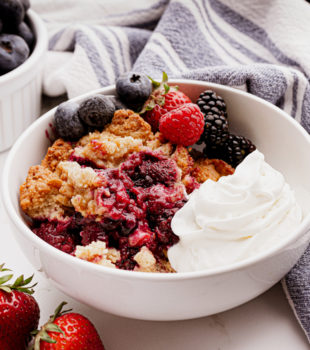
5 Comments on “Orange Pound Cake”
This Pound Cake would be even more fabulous with Chocolate icing drizzled over the top! Love orange & chocolate together. We used to have orange sherbet mixed with vanilla ice cream bars, covered with chocolate. So good!
made the cake and thought it very dry!!!!!!!!!! r all pound cake dry?
Hi, Georgia! If you didn’t change anything at all about the recipe, dry usually means either too much flour or too much oven time. Make sure you measure your flour by weight or by lightly spooning it into the measuring cup. Over-baking can cause the cake to be dry, too. I also recommend periodically checking your oven’s temperature accuracy with an oven thermometer.
I think the recipe needs to be tweaked a little. I weighed the flour and checked the time on my bake, and it was dry.
I’m sorry you had troubles, Wanda! If you didn’t change anything at all about the recipe and are confident in all of your measurements, it’s hard to say what happened to your cake. There are always differences in ingredient brands, baking pans, and ovens that can cause discrepancies.